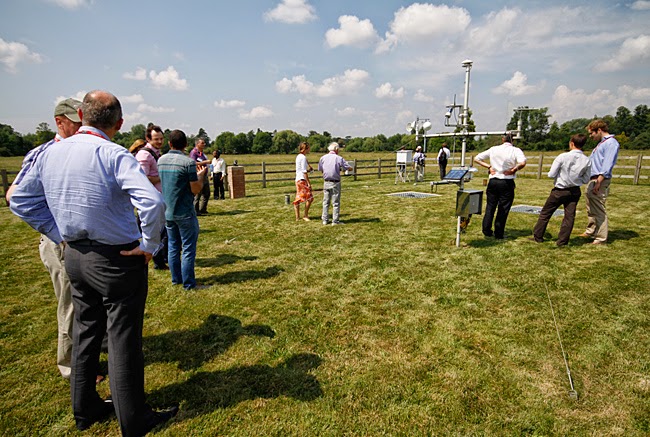The Intergovernmental Council of UNESCO’s International Hydrological Programme met in Paris for its 21st Session last month (June 2014). Professor Alan Jenkins and Dr Harry Dixon of the Centre for Ecology & Hydrology (CEH) were both in attendance. The Council meets every two years to consider the Programme’s current progress and future plans.
Representatives of more than 90 Member States were joined by representatives of UNESCO Water Centres, other UN organizations and NGOs to discuss progress with what is the only intergovernmental programme of the UN system devoted to water research, water resources management, and education and capacity building.
Prof Jenkins chairs the UK Committee for National and International Hydrology, which has its secretariat at CEH and which coordinates the UK contribution to UNESCO’s International Hydrological Programme. As such, Prof Jenkins headed the UK delegation to the recent Council session, supported by Dr Dixon and the UK’s Permanent Delegation to UNESCO. Prof. Geoffrey Gooch (University of Dundee) also attended representing the
Centre for Water Law, Policy and Science, a Category 2 Centre under the auspices of UNESCO, based at the University of Dundee.
As has been the case previously, this year’s Council session was scheduled to directly follow the IAHS/UNESCO
11th Kovacs Colloquium. This allows the Council’s debates to be informed by the science presented and discussed at the Colloquium - which this year focused on “Water Security: Past, Present and Future”.
With its eighth phase, ‘Water Security: Responses to Local, Regional, and Global Challenges’, due to run from 2014 to 2021, a large element of this year’s Council Session was devoted to the forward planning of the Programme. Plans for implementing activities under IHP-VIII’s six Themes were outlined and more details of these can be found on the
UNESCO website. A proposal to establish a ‘World’s Large Rivers Initiative’ was approved and the Council took steps to implement a review of all other IHP Programmes and initiatives over coming years to ensure they best meet the needs of Member States.
 |
| Main themes of IHP-VIII: Water security - responses to local, regional, and global challenges (2014-2021) |
Discussions regarding the Post-2015 development agenda for water concluded with the adoption of a Resolution recommending that the IHP work with UN-Water partners to develop a monitoring and assessment framework to support the implementation of any water related goals and targets.
Further information about the IHP can be found on the UNESCO website.
Related CEH links
Staff page of Prof Alan Jenkins
Staff page of Dr Harry Dixon
CEH news:
CEH plays key role in UK election to Intergovernmental Council of UNESCO's International Hydrological Programme
Further information about the
UK's involvement in the UNESCO International Hydrological Programme
posted by
Paulette Burns



